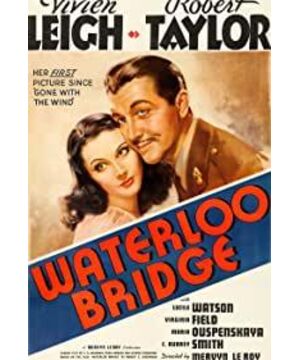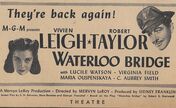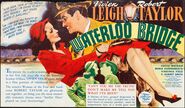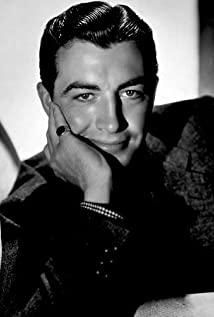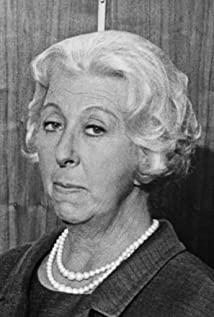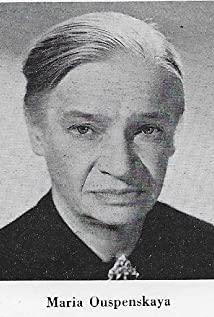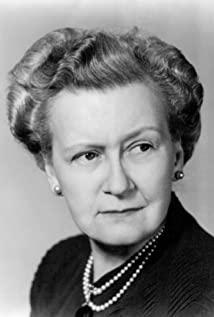/ Organized by Fan Daming /
Time: 15:25-15:45 pm, February 26, 2016 (Friday)
Venue: 202 Nanshan Road, Hangzhou The lecture hall on the ground floor of No. Henglu Art Museum
(the scene after the viewing of Melvin Leroy's work "The Blue Bridge" of Henglu Art Film Bar)
Participants: (Preface to the speech) Fan Daming, Du Sumei, Ma Yile, Lu Zhongpei, Wang Shujin, Sun Fengfeng ( Viewers: Zhang Peihong, Ji Boqing, Zhu Songfa, Fu Peiying, Yu Junlin, Lu Xiaoli, Wu Wanqin, Chen Hua, Xu Yong, Zhang Zhenghui, Ding Yunzhen, Wan Bangyan, Jiang Tianhong, Jiang Xizhen, Hao Yuxia, Huang Zhigang, Zhang Yuguang, Zhang Yusu, Zhu Jianyun, Zhou Hongze etc.)
Moderator: Fan Daming
Record: Sun Fengfeng
About the film's classic Hollywood plot structure, director Leroy, and Mara's tragic ending
Fan Daming: In February, due to the long Spring Festival holiday, only three films were lined up, including one Friday in early March. In order to reflect the pattern of the "World Film Festival", it is good to have several early American classic films, so it is included in Chaplin's "City Lights" and today's "Blue Bridge". The first film after the year, "City Lights", was scheduled last week. The quality of the film is very good, but the player here somehow malfunctioned, so I had to temporarily replace it with a backup film that was not an American film. Symposium. I had a meeting this afternoon at the same time, and I went out for a while. I was not late for that meeting at 2:30, but I had to leave early to get back here before the end of the film. Of course, I am sorry for the organizer of the meeting on the other side for leaving early, and I arrived 5 minutes before the end of the film: as soon as I entered the door, many friends saw the film, not only old friends, although on Friday, young friends Zhang Peihong arrived, Du Sumei also arrived. Or the charm of the film itself, attracting everyone to come. But there are not many people left to talk. Now that I'm here, let's talk.
As far as the film itself is concerned, this is a more old-fashioned Hollywood black and white film with the most traditional classic elements. The story is a flashback structure: through the present tense (September 3, 1939 during World War II) the hero, Colonel Roy Crowning, is jeeped to that particular location, London's famous Waterloo Bridge (the so-called "Blue Bridge"). ”), he looked at the talisman in his hand—the relic of his beloved Mara, so he saw things and thought about people, leading out the whole past and entering the past tense of the story (about 20 years ago in the First World War period); finally, when the story ends, back in the present tense, Colonel Roy, full of melancholy, boarded the jeep and left Waterloo Bridge. The main theme of the music that runs through the whole film comes from the theme song. The subtitles in the film write it as "Safe Journey", which is also what we often call "Friendship Lasts Forever".
The director of this film, Melvin Leroy, who was born in 1900, was a "peer of the century" in the last century (born in the same year as our Chinese modern cultural celebrities Bing Xin and Xia Yan). He passed away in 1987 and lived to be 88 years old. It's also longevity. His name Mervyn LeRoy, for some reason, is used to translate LeRoy into "LeRoy", like a French name. The director, who was a child star singer in his early years, is actually a very powerful character in Hollywood. In addition to this famous film, other films such as "The Wizard of Oz", "Revisiting a Mandarin Dream", "Hibiscus Out of Water", and the gangster film "Little Caesar" "Desperados" and so on are also in his hands, and he also won the Oscar Lifetime Achievement Award for "The House I Live In". If these films can be collected in the future, they can be used as a feature film month for him.
Regarding "Blue Bridge of Soul Broken", I think the main thing I can talk about is the final ending of the heroine Mara. The film tells us that she was finally abandoned by suicide because of various setbacks in her marriage and love, which is naturally a tragedy. What is the reason for this ending? I re-read Tolstoy's famous novel "Anna Karenina" some time ago. The heroine Anna also committed suicide by lying under the wheel, although Mara chose to be under the wheel of the car, and Anna was under the wheel of the train. Down. In Tolstoy's writings, the reason for Anna's suicide is not only because she is in a relationship between two men, such as her husband and her lover, and it is difficult to get rid of the entanglement of her soul, but also because she deeply believes (rather than doubts) his Lover Vronsky may not love her anymore, so she feels it's over; and on Marla's side, her love for Roy—she loves Roy as Roy loves her Like love, in fact has never wavered. However, judging from the gradual development of the film's plot, it is precisely through the description of Roy's return from the "death" on the battlefield, and the retelling of old love with Mara, the two return to Roy's hometown of Scotland's luxurious manor, and even at the family dance. Under the wonderful circumstances of winning the admiring eyes of people on the Internet and a wedding ahead, Mara suddenly realizes the huge gap that can arise between her own once depraved and the norms and orthodoxy of Roy and her family. Gradually, in Mara's heart, something that makes her and the audience start to feel fear and fear. In terms of artistic aesthetic performance, this is also the more painful and tragic factor that the film has successfully penetrated into the depths of people's hearts, and is the most important aspect of the film's artistic appeal. In Mara's tragedy, there may be the social atmosphere and social morality of the 1910s restricting the concept of people, especially in the conservative and orthodox England, and of course it is also related to Marla's specific personal character. Certain factors or weaknesses . Well, I won't say more. Let's hear everyone's opinions.
The film is touching and real. After watching it, I am deeply impressed. The artistic performance is perfect
. Du Sumei: I saw this film when I was 18 years old. The film is very touching, very real, and deeply impressed after watching it. Scenes, music, and character performances are all in place. The tragic ending of the film is really unacceptable. But as a tragic story film, its creation, its artistic expression, is still very perfect.
Mara's subsequent situation goes beyond the bottom line that the hero and his family demand of her
: Mara and Roy, the hero and heroine, are very pure lovers. The man represented the social status of the nobility; the woman, as a ballerina, was at best an urban commoner. There is inequality among them. However, from the performance of the film, the noble man and his family have actually recognized the specific situation of the heroine Mara. However, Mara herself felt that the gap between the two aspects was too great in comparison, especially since she once worked as a laughing prostitute—although her behavior was a last resort, forced by life, and misunderstood It happened on the premise that Roy was already dead. But when the two reunited and came together again, it was obviously beyond the bottom line of what the hero and his family asked of her. Mara's suicide also showed her devotion to love. This story is a human tragedy, and it is also a classic movie.
The Duke hinted at Mara, which made her feel sorry for Roy from the bottom of her heart. This was her psychological motivation to go to a dead end
. Dong Zhujun, the female owner of the Jin Jiang Hotel in Shanghai, and Pan Yuliang, who became a famous female painter. Although they had such an unforgettable past, they did not end up on a dead end because of it. In the film, it was Roy's uncle, and the conversation between the duke and Mara hinted at Mara, which made her feel sorry for Roy from the bottom of her heart.
Mara's ending shows that she can only be a weak woman in the patriarchal society in which she lives.
Fan Daming: Like Dong Zhujun and Pan Yuliang, they all became strong women in the end—they were not overwhelmed by their own experiences, but instead rose more brilliantly. It's a bad thing that turns into a good thing, and negative energy turns into positive energy. Of course, Dong Zhujun is said to only sell singing, not to the point of being a prostitute. It can be regarded as "selling singing but not selling spring". Of course, also in China, there are those who are overwhelmed, such as Ruan Lingyu, a female star in the film industry in the 1930s. Ruan Lingyu is of course not a so-called prostitute. Her death is generally attributed to being killed by the darkness and public opinion of the society around her. In contrast, Mara's ending shows that for the British society she lived in 100 years ago, a completely male-dominated society, she could only be a weak person, a weak woman.
What I admire the most is the theme song "A Friendship Is Everlasting" played by the violin
Wang Shujin: The description of love in the film is very pure, but what I appreciate most is the theme song "A Friendship Is Everlasting" played by the violin.
Marla's death is so sad. It should be said that she died of social pressure
Sun Fengfeng: The film's psychological description of the hero and heroine as lovers is very real. Mara's devotion to love is so touching. I saw an audience member next to me and she was in tears! Marla's death is so sad. It should be said that she died of social pressure.
Marla is not at the point where she has to destroy herself; are we going to continue to "laugh at prostitutes"?
Van Damien: Mara was entangled with her own past, and eventually she couldn't get rid of it and embarked on the road of suicide. A similar situation in Russia is also written by Tolstoy. In Toon's other long masterpiece "Resurrection", the heroine Maslova is a pure girl who is "half adopted and half maid". girl, reduced to a prostitute in the city. And the male protagonist, Duke Nekhludoff, as a member of the Russian aristocratic society, found out when he was serving as a court juror that Maslova who was convicted now was the Katyusha he had defiled back then, so he found out in his conscience, Sincerely want to appeal her wrongful case and ask to marry her. It is very rare for Duke Nekhrudoff to have such an idea and put it into practice, but it represents the ideal of the so-called self-redemption and "moral self-fulfillment" that the writer entrusted to him. Here, such an example is given to illustrate that Mara's specific encounter did not reach the point of self-destruction. If Mara is in today's China, if she no longer complains about herself like she does in the film, maybe she can avoid such a tragedy. However, such a statement does not mean that they are required to be like today's women who are very open-minded. For example, there are so-called "assistant girls" and "assistance female college students" that are popular in some western developed countries. They are willing or willing. It doesn't matter whether they are selling themselves or not, as long as they can earn money for basic needs for her reading or living expenses - then they have become the typical believers of "laughing at the poor and not laughing at prostitutes". Such women may, to a certain extent, reflect the loss or variation of moral values in contemporary society. And Mara is obviously on the opposite side of these characters, because the British society she lived in 100 years ago was clearly a society of "laughing prostitutes". However, in the past society and in the history of China and foreign countries, some men were often men of certain identities. Not only did they not "laugh at prostitutes", but they often married prostitutes, just like what Duke Nekhludoff thought, or even at all. It is not out of consideration for the redemption of their original sin - a typical example is the story of General Cai E and Xiao Fengxian - they not only do not "laugh at prostitutes", but also use marriage to make them prosperous and return to society . If in our present world and society the phenomenon of prostitution cannot be truly eliminated, then the question we face, or the first question to be solved, is whether we are going to "laugh at" or continue" Laughing prostitute"? Otherwise, what should a woman like the fallen Mara do, live or die—to do, or not to do? I am afraid it is still an unsolvable problem.
Organized on February 29, 2016, and supplemented on March 1.
Note: This summary is the 113th summary of the discussion since the establishment of Hangzhou Henglu Art Film Bar.
View more about Waterloo Bridge reviews


